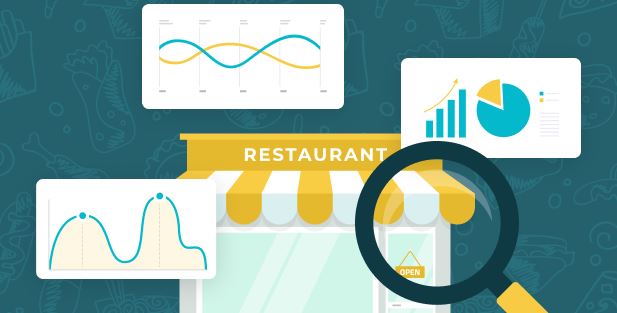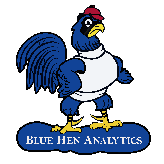
The restaurant industry is one of the most competitive sectors on the planet. Not only do we as a species need to eat and drink to survive; communal dining is an experience that people have cherished for centuries. And as we love to dine out whenever we can, there is a great deal of demand for restaurants in villages, towns, and cities across the planet.
Put simply, restaurant analytics are all the data from your restaurant turned into digestible insights you can use to inform business decisions. If you can measure it, you can improve it, which is why restaurant analytics are so important.
When you take the time to dive into these data points, you get a story of how your restaurant runs. You can find out important information, from how much food is wasted to which staff members are over – or under – performing to what kind of payment method is most popular among your customers.
Food costs will directly impact your bottom line. It can minimize or maximize your profit margin because any food wasted is also money wasted. Use the food cost formula to identify major operational concerns such as excess waste, incorrect pricing, or inconsiderate purchasing. For a better control over your operations, we suggest you calculate your food cost per recipe and overall restaurant food cost percentage weekly.
Look at standard casual dining corporations, and you can quickly identify that they’re building menus and promotions around their menu item profit calculations. Olive Garden has its ongoing “Endless Soup and Salad” for lunch. Without a doubt, they make much more serving endless soup than on nearly any other lunch item. Use the menu item profit formula to begin menu engineering. Get the most out of your profit-generating dishes.
An inventory turnover ratio, ITR, is the time frame it takes for you to go through a complete inventory rotation. Overstocking inventory is a significant problem, mainly because it lends itself to a lot of food waste, and ultimately a high food cost. Understocking leads to shortages and angry guests. Knowing your ITR allows you and your managers to understand inventory rotation and manage the consequences of inventory management.
Labor mismanagement is one of the most common reasons for restaurant failure. You need just enough people working to keep your kitchen and dining room running smoothly but not having anyone standing around with nothing to do. Labor is among the highest costs in any restaurant ranking right next to food costs. Still, it can set the standard for your guest’s experience.
Knowing your turnover with employees can uncover critical problems in your operations and help you to build better processes. To start, you will need to track your average training hours, have a strict training plan, and know when to pull the plug on a bad hire. Poor hiring decisions can create a toxic environment that can cause good employees to leave. Or they can put a strain on your labor cost with wasted hours.
Your cost of goods sold calculation is the key to seeing the forest and not the trees. Get a big-picture view of the health of your store. Many restaurant owners will use this restaurant metric to understand the ebb and flow of their business over time.
Your gross profit will showcase your store’s revenue after removing the cost of goods sold. Usually, restaurant owners will use this metric as a percentage and have a goal percentage for the period or quarter. Gross profit is the money you must work with to pay labor, rent, overhead expenses, and of course, yourself.
The net profit margin includes everything that was missing from the gross profit. This metric looks at the final product rather than the business aspects that are still in motion. This is the amount of profit that you get to keep, the money that is in your restaurant’s pocket.
Restaurant owners often focus on the prime cost, which sets them apart from most other industries as it is pretty unique to foodservice. Prime cost is entirely within the owner or management team’s control.
These costs are eternally fixed; they are the exact opposite of your prime costs. They are property taxes, utilities, and mortgage or lease payments. This rate will help you know how to plan your pricing and accommodate for other areas of operations. A restaurant owner needs to plan around overhead costs because they cannot be changed. Knowing your overhead rate down to the hour will allow you to factor those costs into your day-to-day accounting practices.
This calculation is vital in all accounting practices, but many restaurant owners leave it until the end of the year. EBITDA is a formula that can be helpful for quarterly check-ins to ensure your business is still stable. Your financial advisor or accountant will likely calculate this number when they step in for financial management planning. Restaurants need this formula to identify what they have earned because of operations without accounting for capital spending, or finance management.
Your break-even point is what makes sure that you are going to work for a purpose. If you do not hit the break-even point, then you might want to consider revitalizing the store with an expert consultant or selling. It is possibly the most important restaurant performance metric because it tells you how much you need to make to stay in business.
How much does each seat bring into your restaurant? Using the average cover per seat can help give managers an idea of how many table-turns they need per night or plan for sales forecasts. Some POS systems can even calculate this for you if you go through the process of setting up the seats in the dining room and mapping out your table turns.
The food and beverage performance metric of “RevPASH” or revenue per available seat hour enables for top-quality planning. This calculation is strictly a performance tool, specifically one for management performance. It goes a step further than the average seat cover by associating a value based on seat and time. Managers can use this figure hour by hour to make labor decisions or to host specials on menu items with higher profits.
Every single restaurant manager, owner, and even serving staff should worry about table turns. How fast do your tables move on a Tuesday night versus a Friday night? Knowing that number can help you plan for staffing needs, nightly specials, and more.
The time frame for a table turn will help managers put the right serves in the right spot. While your table turnover gave you a figure on how many times each table turned through a shift, this gives you a time in minutes.
Keeping track of this metric helps you and your team know how you are performing hour-to-hour and day-to-day. Run contests and give awards for high turnover rates or use customer headcounts for future projects on labor and food demands.
Traditionally used in marketing, the cost it takes to bring in new customers under one promotion can help you plan out your next marketing strategy. Restaurants now use social media as well as traditional advertising methods, and you will need to track the expenses for both methods.
It is easier for restaurants to keep customers than to get new customers. It can cost 5x more to bring in new customers. Instead, use a loyalty club to encourage guests to return regularly and to track your customer retention. Use a POS that has a customer base platform, where you can market to customers with discounts and bonuses.
Average check is the amount of money earned divided by the number of customers a restaurant had over a certain period of time.
Average check is the amount of money earned divided by the number of customers a restaurant had over a certain period of time calculated for each member of the wait-staff.
